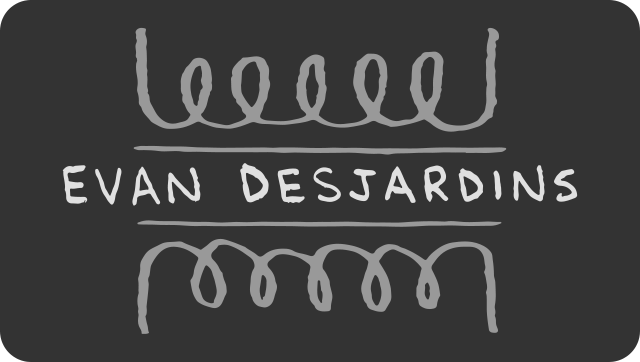I put together this active DI recently based on a design published by retired Swedish sound engineer Bo Hansén. The result is a device that sounds better than commercial products that cost significantly more than the price of parts.
Despite being an active circuit, the design still uses a transformer to step up the voltage and match impedance. This is supplemented by a couple low-noise transistors which buffer and amplify current.
A PCB layout has been designed and released by GroupDIY forum members in collaboration with Bo but I chose instead to wire the circuit up on a perforated prototype board. Frankly, it would have saved me time and hassle by ordering in a printed board but I wanted to try my hand at circuit layout.
Circuit from above:
Not bad. you can see a couple bodge wires on the bottom running to the input connector. Originally the input connector was directly in the bottom-middle of the board but when I started to assemble the unit after testing I found that the Molex connector I used didn’t allow enough clearance with the input jack. The quickest way around this was to hack away the original board connector and round a couple wires connecting the new connector to the same place. Using a right-angle Molex would work here.
That Lundahl transformer sounds fantastic, especially on bass guitar. It didn’t come cheap, though. Cost including shipping was $114CAD from K&K Audio in the States. That being said, commercial DIs with comparable transformers cost in the hundreds of dollars. In a casual comparison, my homemade DI plainly outperformed a Radial JDI and sounded comparable to the on-board direct input of an SSL console. Listeners agreed that the Bo Hansen design had much better high-frequency definition while retaining a full bottom-end.
Circuit from below:
Here we see the bottom of the circuit. When possible, connections were made by joining component leads. The rest is normal 22AWG hook-up wire.
Testing the device:
Before mounting the transformer ($$$), I put it into circuit with small alligator clips. Test source was a line signal, stepped down through a re-amping box. The active electronics draw the minimal power needed from a microphone preamp’s phantom power source.
The assembled DI:
Powder-coated die-cast aluminum chassis made here in Canada by Hammond Mfg. My drill bits took to this like butter. Maybe I’ll make a stencil and spraypaint the top in white?
Counter-sunk screws mounting the circuit. Wish I had a drill press! It’s very hard to place holes exactly with a hand-drill.
This 24mm Starret circular saw and was extremely handy for this project, and affordable. The perfect size for Neutrik D-series panel-mount connectors. First, drill a small pilot hole. The circular saw has a guide bit in the centre which you fit into the pilot. Drill at high-speed to prevent the teeth from catching which could either propel the work-piece or torque your wrist causing injury. Very little pressure was needed!
I love these Molex SL series circuit board connectors. They’re polarized so you’ll never put them in the wrong way. They’re latching and remove very easily, making it stupid easy to assemble and dis-assemble for maintenance, making improvements or (d’uh) troubleshooting.
If I ever need another DI, I’ll probably give this design another go. There are obviously a lot of things I could do to improve the construction or add functionality (polarity flip, pad, battery power, etc). As it stands though, this was a good learning experience resulting in a highly useful bit of kit.
Here’s my circuit layout, in case anyone might find it useful:
Active DI 6x9cm perfboard layout Evan Desjardins (pdf)
Read more about the project from Bo’s personal website:











0 Comments